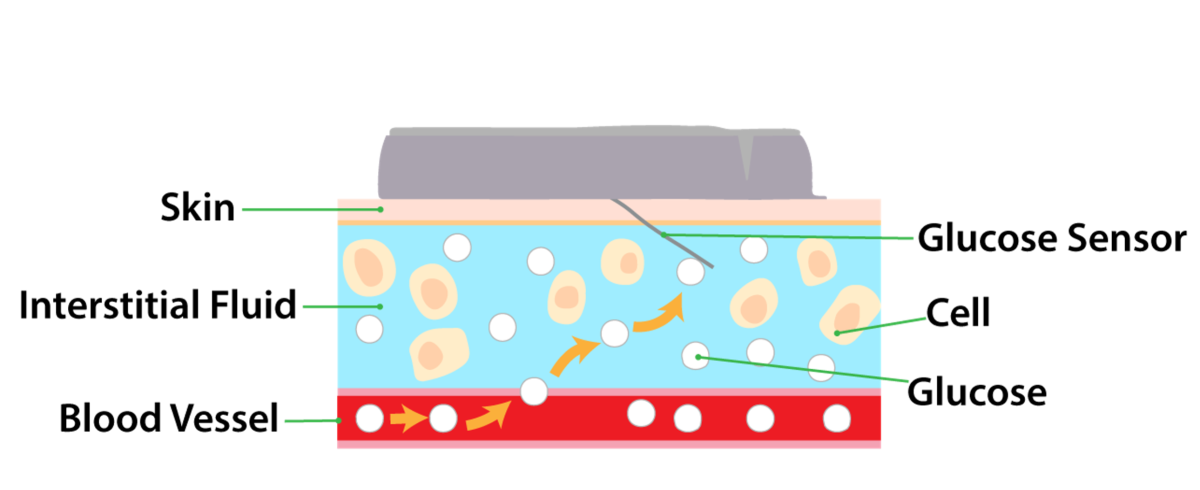How accurate is the Dexcom G6?
It’s important to know how different glucose tests work to understand how Dexcom G6 can be part of your diabetes care.
Your doctor may do a glucose assessment test to provide a more accurate glucose number than any product you use at home, including blood glucose meters and Dexcom G6. Both meters and Dexcom G6 are compared to a what is called a “YSI” to measure accuracy in clinical studies.
The Dexcom G6 and a blood glucose meter measure different fluids in your body. The Dexcom G6 measures glucose in your interstitial fluid – that is, the fluid in between your skin and your blood. A blood glucose meter measures plasma glucose from a drop of your blood. These differences can mean that the readings from your Dexcom G6 will most likely be close, but not always exactly the same.

If you are comparing the meter and your Dexcom G6 to see how closely the numbers match each other, consider the “%20/20 rule”.
%20/20 Rule:
If your glucose is below 4.4 mmol/L, your sensor is clinically accurate if the meter is reading +/- 1.1 mmol/L. If your glucose is above 4.4 mmol/L your sensor is clinically accurate if the meter reading is +/- 20%.
If your G6 reading and meter values are within the “%20/20 rule”, it means they match closely. To apply the %20/20, follow these steps using the table below:
Look up your meter value in the bolded middle column.
The left column (G6 –) shows the low range for a G6 reading that’s a close match.
The right column (G6 + ) shows the high range for a G6 reading that’s a close match.
For example, the highlighted row shows that if your meter value is 5.6 mmol/L, your G6 reading is a close match if it’s between 4.4 and 6.7 mmol/L.
G6- | Meter Value mmol/L | G6+ | G6- | Meter Value mmol/L | G6+ | G6- | Meter Value mmol/L | G6+ | ||
low | 2.2 | 3.3 | 7.5 | 9.4 | 11.3 | 12.9 | 16.1 | 19.3 | ||
low | 2.8 | 3.9 | 8.0 | 10.0 | 12.0 | 13.3 | 16.7 | 20.0 | ||
2.2 | 3.3 | 4.4 | 8.4 | 10.5 | 12.7 | 13.8 | 17.2 | 20.6 | ||
2.8 | 3.9 | 5.0 | 8.9 | 11.1 | 13.3 | 14.2 | 17.8 | 21.3 | ||
3.6 | 4.4 | 5.3 | 9.3 | 11.7 | 14.0 | 14.7 | 18.3 | 22.0 | ||
4.0 | 5.0 | 6.0 | 9.8 | 12.2 | 14.7 | 15.1 | 18.9 | high | ||
4.4 | 5.6 | 6.7 | 10.2 | 12.8 | 15.3 | 15.5 | 19.4 | high | ||
4.9 | 6.1 | 7.3 | 10.7 | 13.3 | 16.0 | 16.0 | 20.0 | high | ||
5.3 | 6.7 | 8.0 | 11.1 | 13.9 | 16.7 | 16.4 | 20.5 | high | ||
5.8 | 7.2 | 8.7 | 11.5 | 14.4 | 17.3 | 16.9 | 21.1 | high | ||
6.2 | 7.8 | 9.3 | 12.0 | 15.0 | 18.0 | 17.3 | 21.6 | high | ||
6.7 | 8.3 | 10.0 | 12.4 | 15.5 | 18.6 | 17.8 | 22.2 | high | ||
7.1 | 8.9 | 10.7 |
LBL-1000864 Rev001
